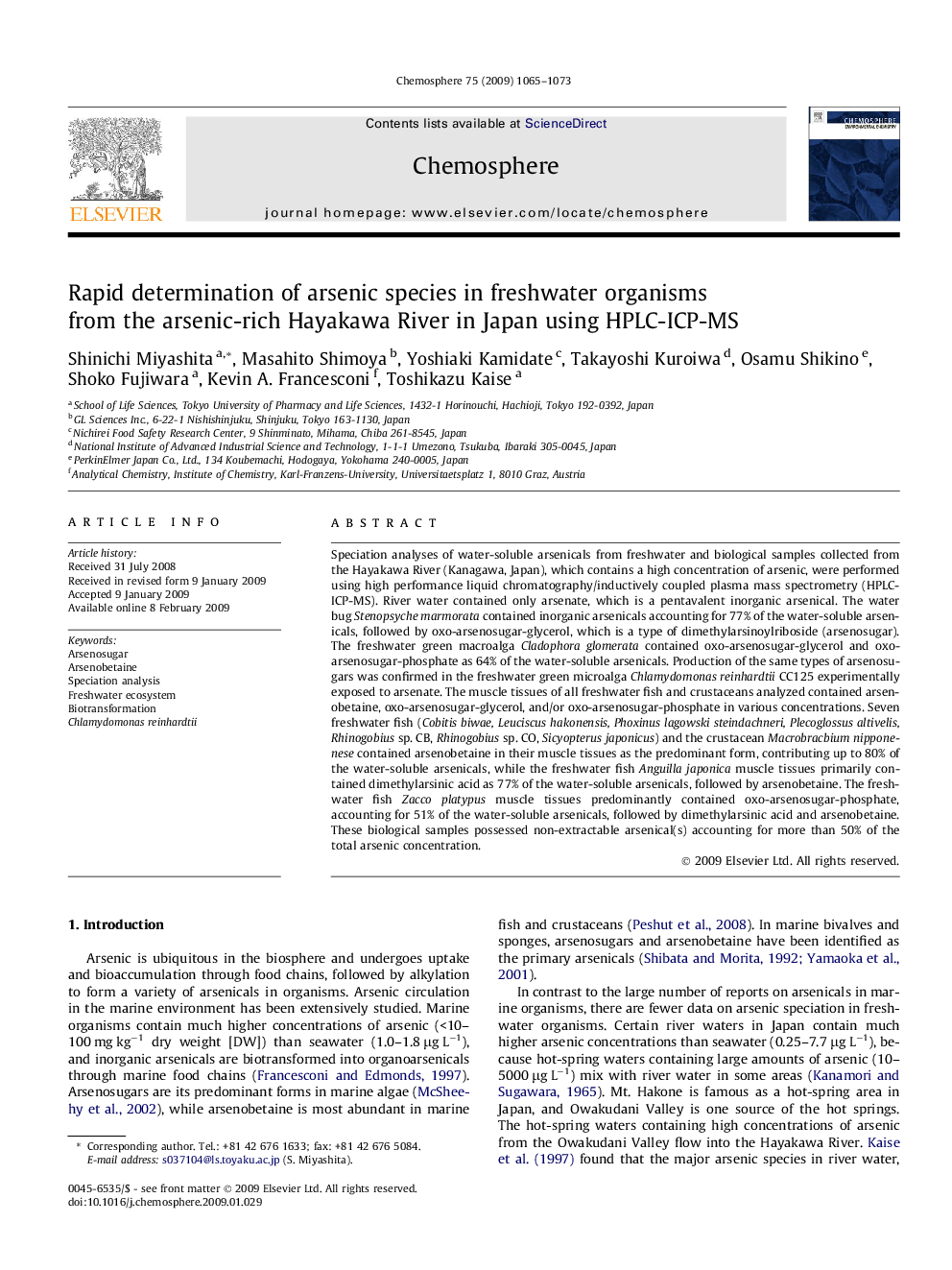| کد مقاله | کد نشریه | سال انتشار | مقاله انگلیسی | نسخه تمام متن |
|---|---|---|---|---|
| 4413120 | 1307665 | 2009 | 9 صفحه PDF | دانلود رایگان |

Speciation analyses of water-soluble arsenicals from freshwater and biological samples collected from the Hayakawa River (Kanagawa, Japan), which contains a high concentration of arsenic, were performed using high performance liquid chromatography/inductively coupled plasma mass spectrometry (HPLC-ICP-MS). River water contained only arsenate, which is a pentavalent inorganic arsenical. The water bug Stenopsyche marmorata contained inorganic arsenicals accounting for 77% of the water-soluble arsenicals, followed by oxo-arsenosugar-glycerol, which is a type of dimethylarsinoylriboside (arsenosugar). The freshwater green macroalga Cladophora glomerata contained oxo-arsenosugar-glycerol and oxo-arsenosugar-phosphate as 64% of the water-soluble arsenicals. Production of the same types of arsenosugars was confirmed in the freshwater green microalga Chlamydomonas reinhardtii CC125 experimentally exposed to arsenate. The muscle tissues of all freshwater fish and crustaceans analyzed contained arsenobetaine, oxo-arsenosugar-glycerol, and/or oxo-arsenosugar-phosphate in various concentrations. Seven freshwater fish (Cobitis biwae, Leuciscus hakonensis, Phoxinus lagowski steindachneri, Plecoglossus altivelis, Rhinogobius sp. CB, Rhinogobius sp. CO, Sicyopterus japonicus) and the crustacean Macrobracbium nipponenese contained arsenobetaine in their muscle tissues as the predominant form, contributing up to 80% of the water-soluble arsenicals, while the freshwater fish Anguilla japonica muscle tissues primarily contained dimethylarsinic acid as 77% of the water-soluble arsenicals, followed by arsenobetaine. The freshwater fish Zacco platypus muscle tissues predominantly contained oxo-arsenosugar-phosphate, accounting for 51% of the water-soluble arsenicals, followed by dimethylarsinic acid and arsenobetaine. These biological samples possessed non-extractable arsenical(s) accounting for more than 50% of the total arsenic concentration.
Journal: Chemosphere - Volume 75, Issue 8, May 2009, Pages 1065–1073